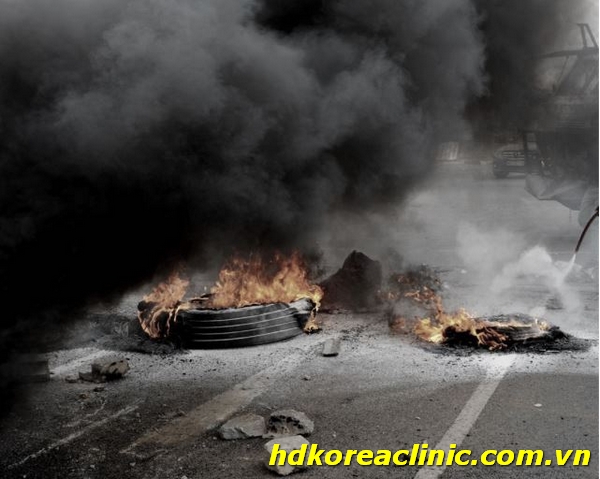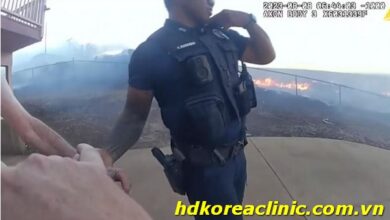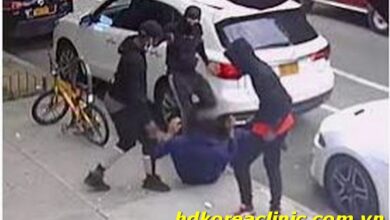Maki Skhosana: A Name Etched in South African Tragedy

In the annals of South Africa there are names that evoke both pain and resilience, names that bear witness to the tumultuous struggle for freedom and justice. Among these names, there is one that stands out with a haunting legacy – Maki Skhosana. Her story is a poignant reminder of the brutality and complexity of the apartheid era, a story of recrimination, violence and the search for truth and reconciliation. hdkoreaclinic.com.vn and you together discover the story of Maki Skhosana, a name deeply engraved in the painful history of South Africa.
I. The Brutal Execution of Maki Skosana
In the scorching July of 1985, South Africa witnessed a gruesome event that would forever stain its history – the brutal execution of Maki Skosana through the infamous practice of necklacing. On that fateful day, Maki Skosana, a young woman from the township, became the victim of a horrifying act of violence.
Maki’s execution was rooted in the deeply held belief among her comrades that she had betrayed her fellow activists from the Congress of South African Students (COSAS) to the merciless security forces. This alleged betrayal led to the tragic deaths of eight young COSAS activists on the East Rand. Such accusations were not taken lightly in the tumultuous times of apartheid-era South Africa, where the consequences of being labeled an informer were often deadly.
What makes Maki Skosana’s case even more harrowing is the fact that her execution was not a clandestine act hidden from the public eye. Instead, it was filmed by the South African Broadcasting Corporation (SABC) and shamelessly used by the apartheid state’s media as a tool for anti-resistance propaganda. The shocking footage of her gruesome death was repeatedly broadcasted, further deepening the wounds of the nation and instilling fear in the hearts of those who dared to oppose the oppressive regime.
Maki Skosana’s execution stands as a chilling reminder of the extreme violence that characterized the struggle against apartheid. It was a stark illustration of how accusations of collaboration with the enemy could lead to unimaginable brutality. This tragic incident, captured on film and disseminated for propaganda, serves as a testament to the horrors endured by those who fought for justice and equality in South Africa during this dark period.

II. Joe Mamasela’s Revelation and the TRC Investigation: Unraveling the Complex Truth
In the midst of the Truth and Reconciliation Commission’s (TRC) proceedings in 1995, a bombshell revelation emerged that would cast new light on the tragic case of Maki Skosana. Joe Mamasela, a former operative for a death squad, shocked both the commission and the public with his assertion regarding Maki Skosana’s involvement.
Mamasela claimed that Maki Skosana had collaborated with him, suggesting that she played a role in the deaths of the COSAS activists in question. This revelation immediately intensified the scrutiny surrounding her case and introduced a layer of complexity that demanded thorough investigation.
Understanding the gravity of these allegations and the potential implications, the TRC embarked on a meticulous examination of the events leading up to Maki Skosana’s execution. It became increasingly apparent that this case was far from straightforward and that a deeper understanding of the circumstances was necessary.
As the TRC delved deeper into the matter, it uncovered surprising and crucial information. After an extensive investigation, the commission came to a significant conclusion: Maki Skosana had been unjustly accused. The evidence indicated that she had no knowledge that “Mike” was, in fact, Joe Mamasela, the askari who had made the accusations against her.
The TRC’s findings were unequivocal. Maki Skosana had been falsely implicated as an informer responsible for the tragic deaths of COSAS activists in incidents involving booby-trapped hand grenades. Moreover, the commission characterized her brutal execution through necklacing as a horrifying act of extraordinary violence, which left an indelible mark on the struggle for freedom in South Africa.
The revelation brought about by Joe Mamasela’s testimony, coupled with the TRC’s comprehensive investigation, not only vindicated Maki Skosana but also underscored the complexity of the circumstances surrounding her untimely demise. It served as a stark reminder of the need for a thorough and impartial examination of the events of that era, contributing to the pursuit of justice and reconciliation in South Africa.

III. TRC Findings: Unveiling the Truth
The Truth and Reconciliation Commission (TRC) conducted a thorough investigation into Maki Skosana’s case, unearthing significant revelations. Their findings confirmed Maki’s innocence, debunking the false claims that she was an informant responsible for the deaths of COSAS activists in hand grenade incidents.
The TRC’s inquiry also emphasized the sheer brutality of Maki Skosana’s necklacing, an act that not only claimed her life but also stained the struggle for freedom with its extreme violence. Responsibility for her lynching was attributed to both the individuals involved and the Duduza community. Furthermore, the TRC held the United Democratic Front (UDF) and the African National Congress (ANC) accountable, stating that they too shared responsibility for this grave violation of human rights.
The TRC’s findings not only vindicated Maki Skosana but also exposed the grim reality of violence and false accusations that marred the anti-apartheid struggle. It served as a stark reminder of the moral complexities faced by those who fought for justice and equality during this tumultuous era in South Africa’s history.
IV. Conclusion: Acknowledging a Dark Chapter
The harrowing tale of Maki Skosana’s necklacing represents a dark and painful chapter in South Africa’s history. Her brutal execution, fueled by false accusations and a thirst for vengeance, remains a haunting reminder of the complexities and moral quandaries that marked the struggle against apartheid.
As we reflect on the tragic events surrounding Maki Skosana, it is crucial to recognize the importance of acknowledging this dark chapter in South Africa’s history. The Truth and Reconciliation Commission’s findings have laid bare the truth, exonerating Maki and revealing the depths of violence and injustice that marred the anti-apartheid movement.
In doing so, we honor Maki Skosana’s memory and the countless others who suffered similar fates during those tumultuous times. We pay tribute to their resilience and unwavering commitment to justice, even in the face of false accusations and brutal violence.
Moreover, we must continue to seek truth and reconciliation, both as a nation and as individuals. It is through this process that we can heal the wounds of the past and pave the way for a more just and equitable future. Maki Skosana’s story serves as a poignant reminder of the enduring quest for justice and the indomitable human spirit that perseveres even in the darkest of times.










